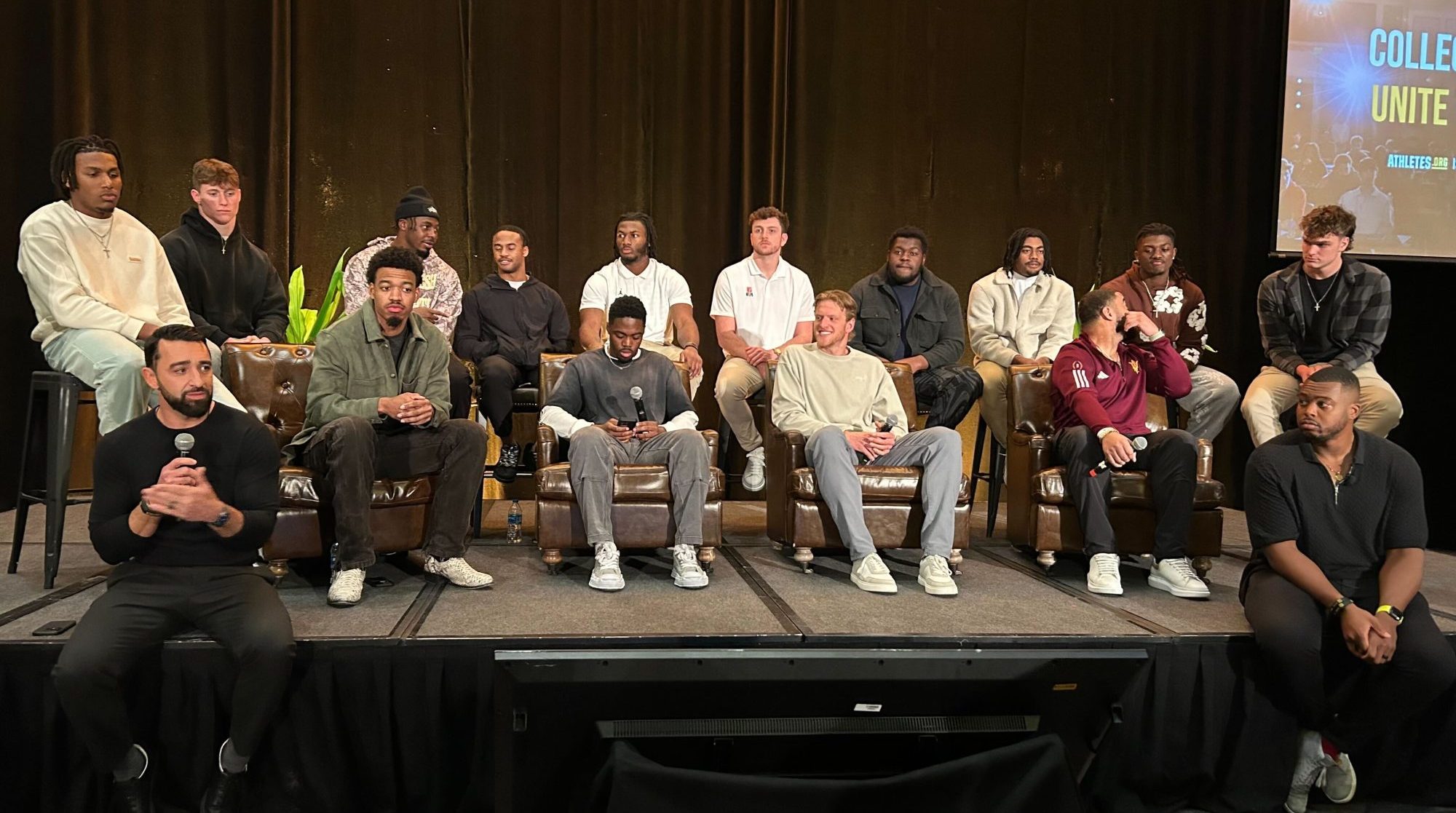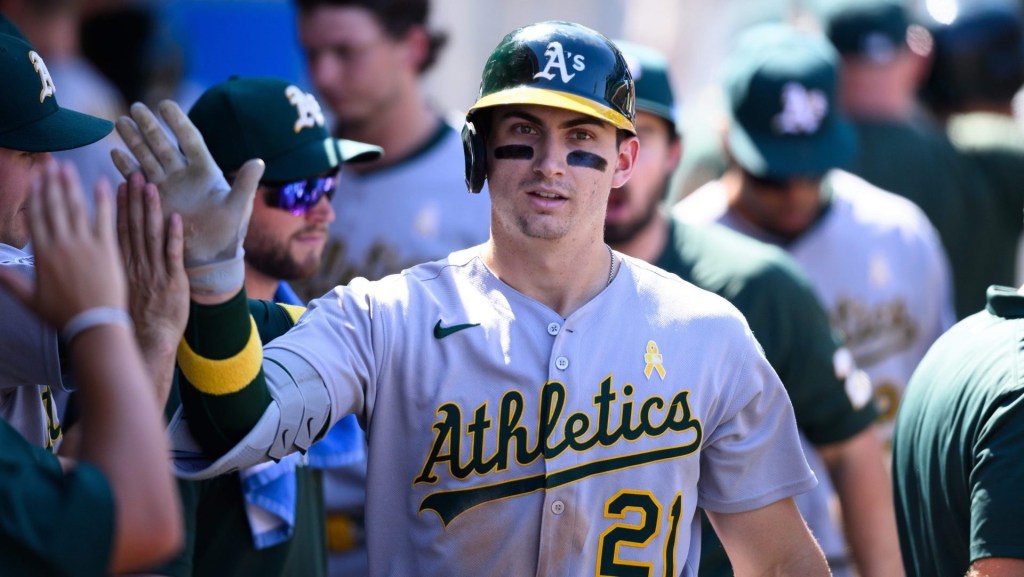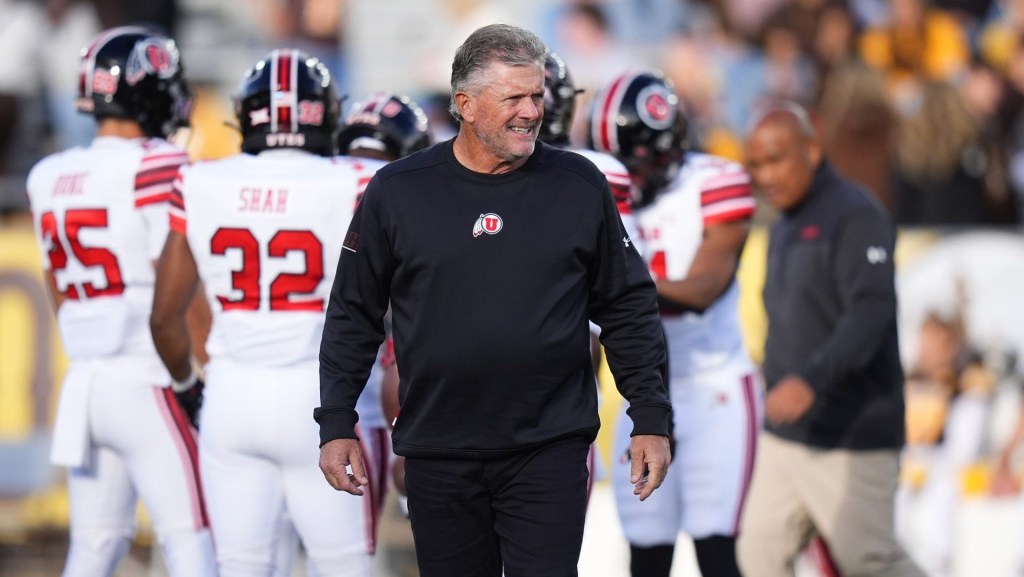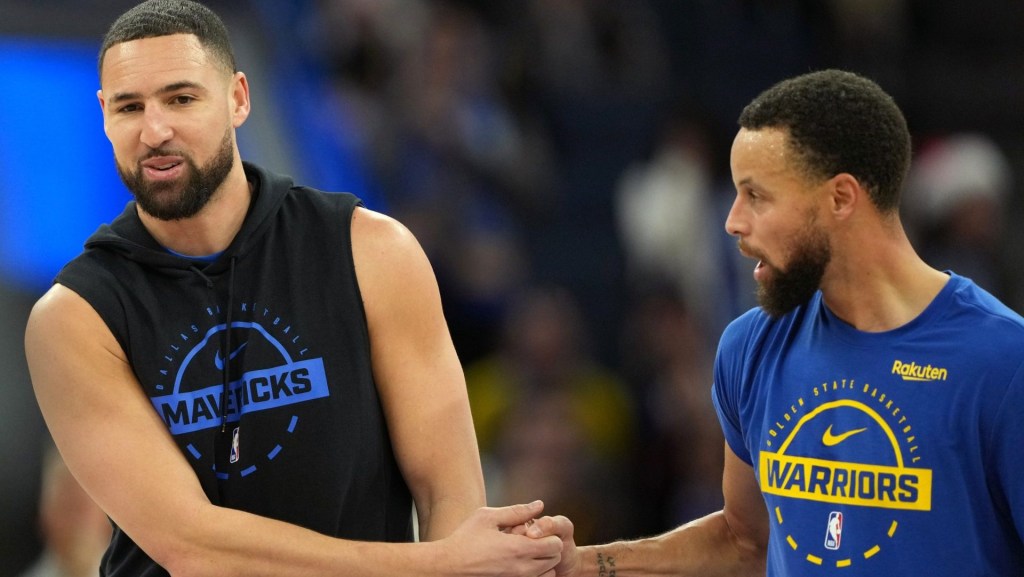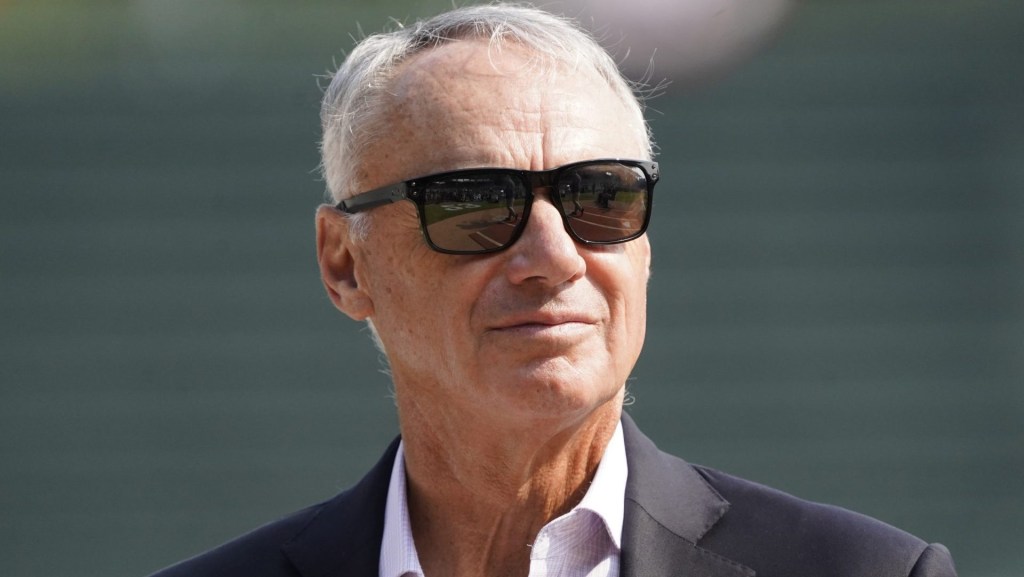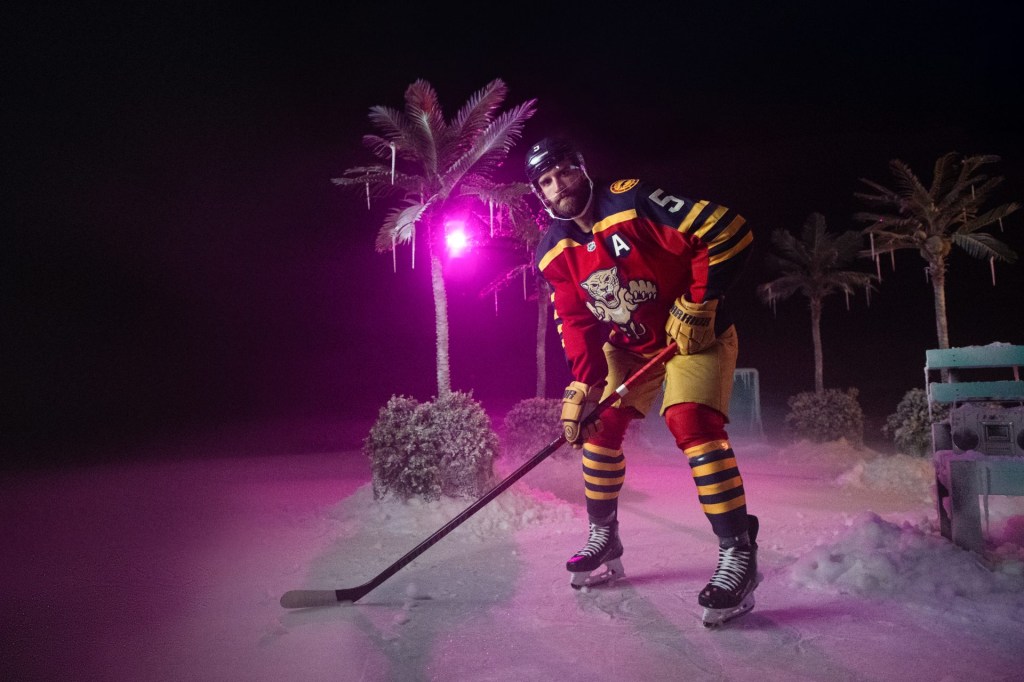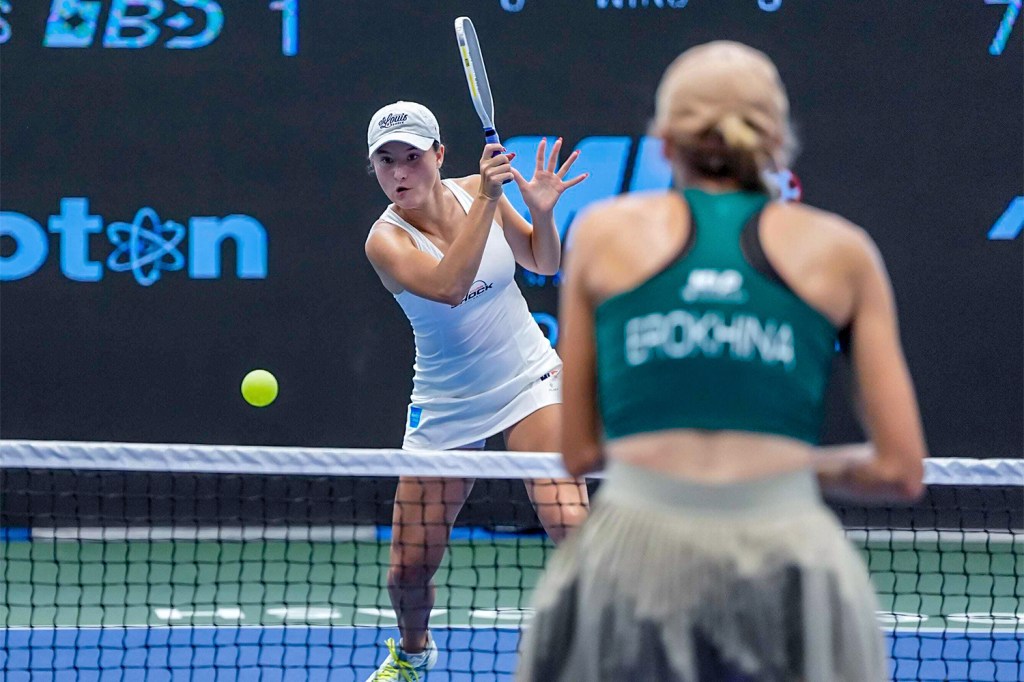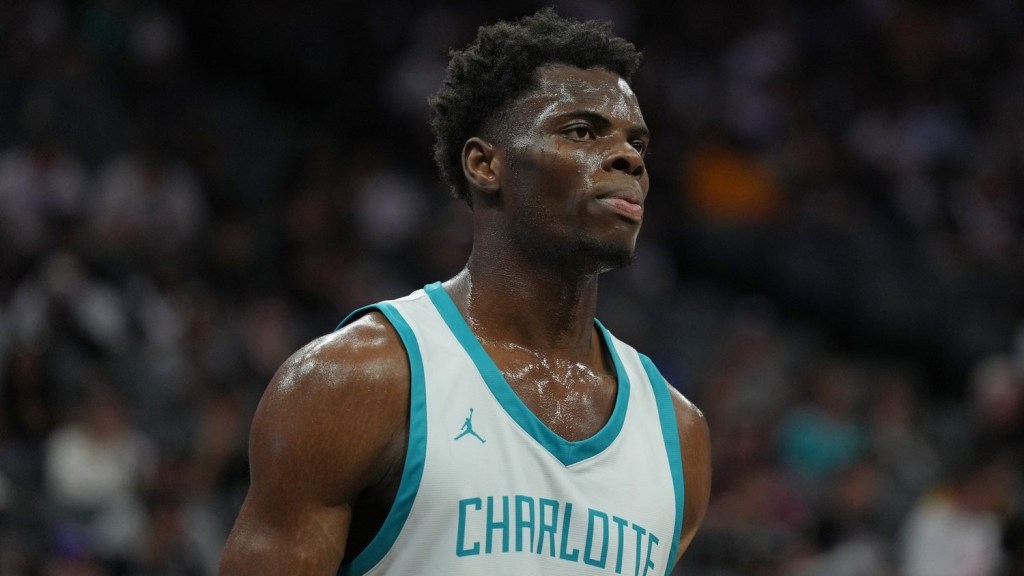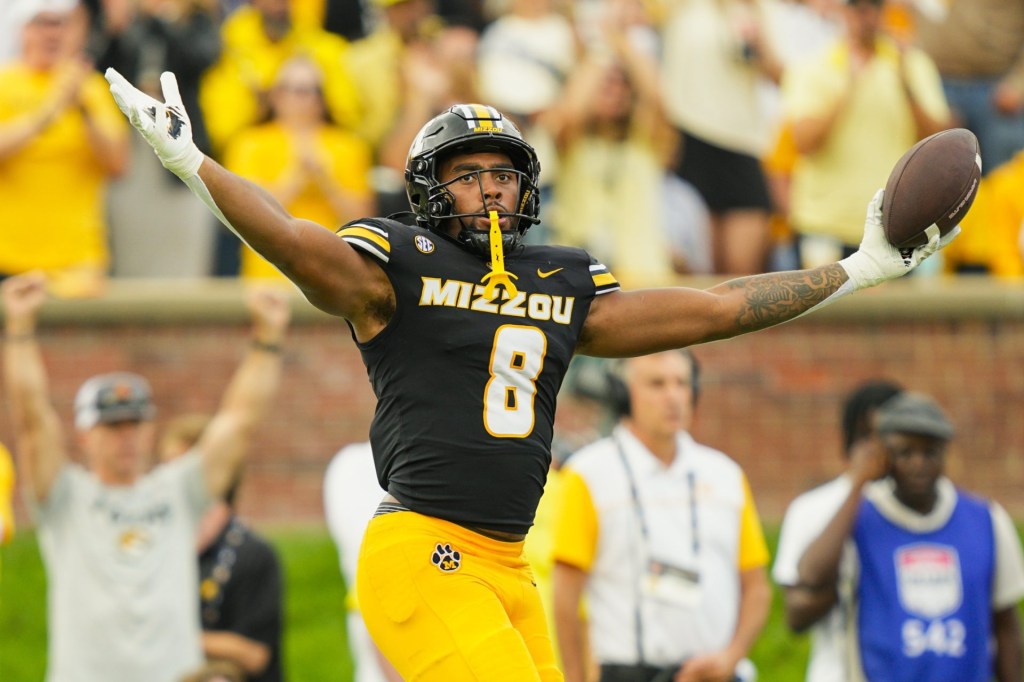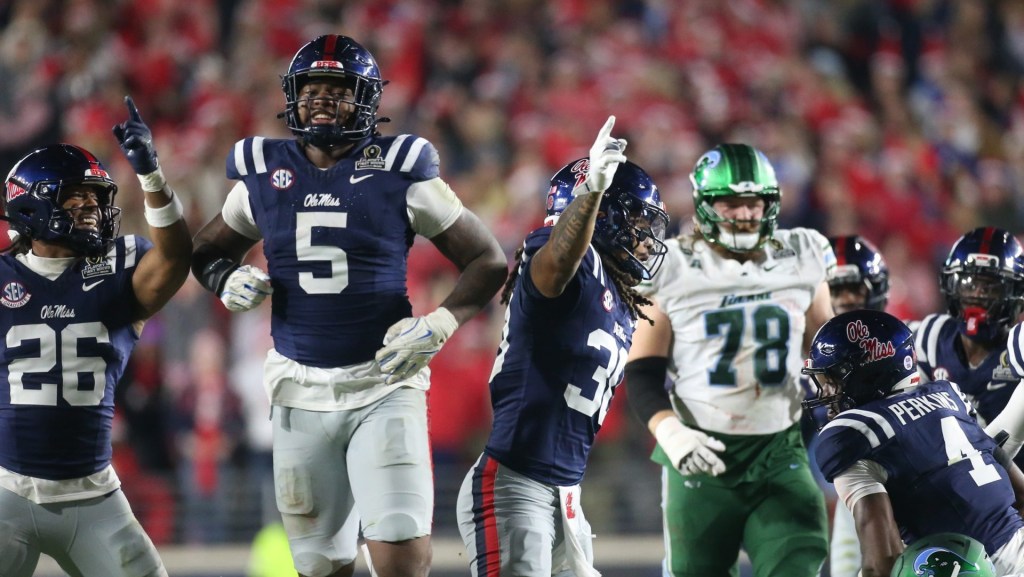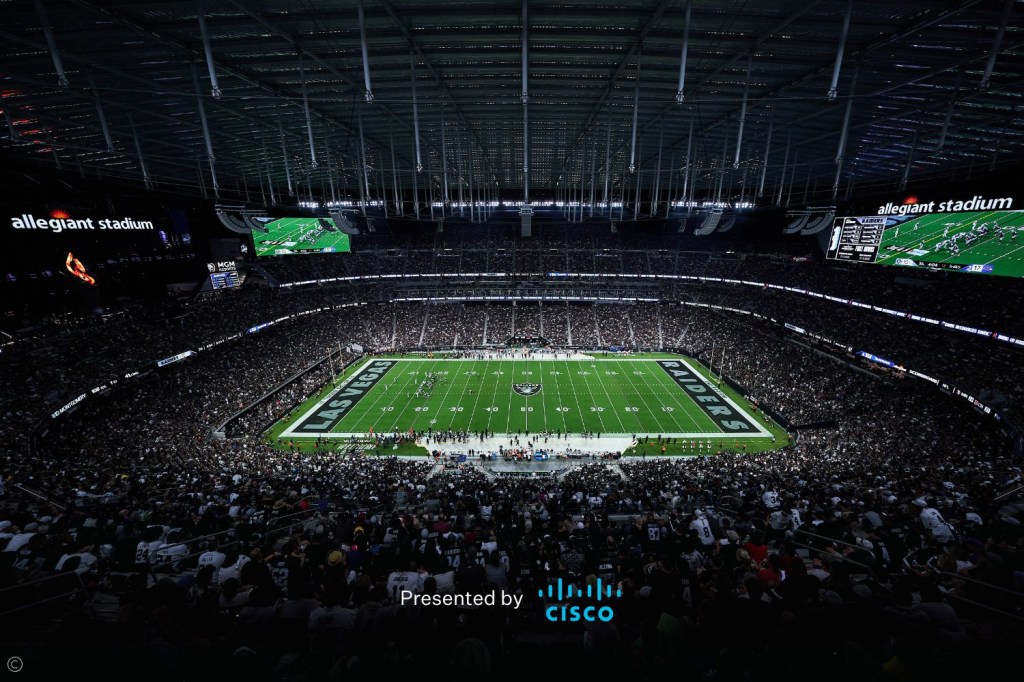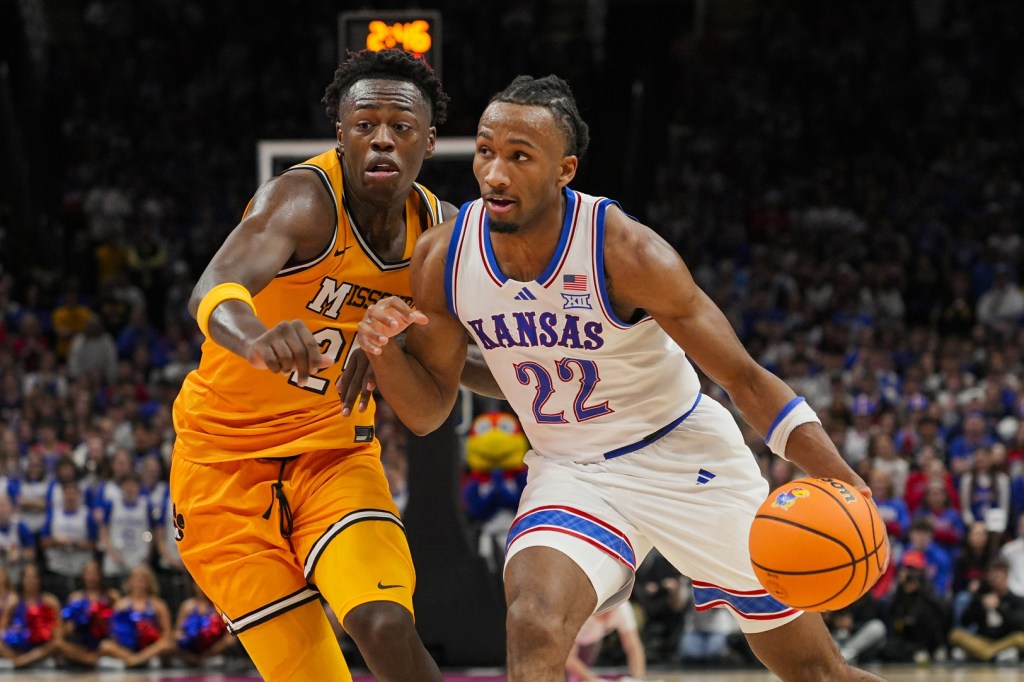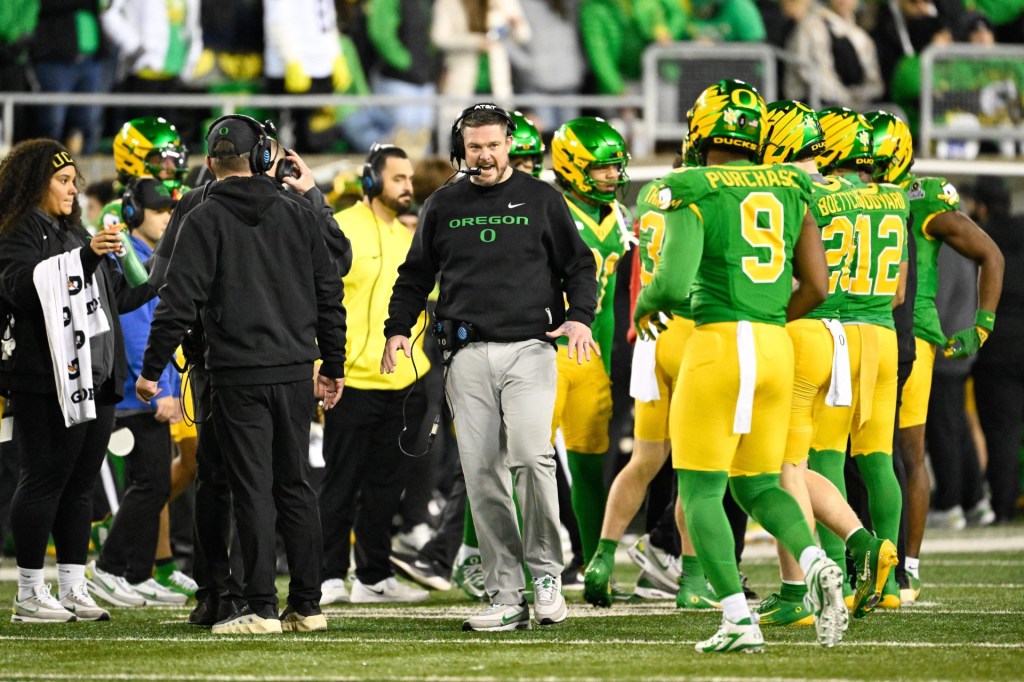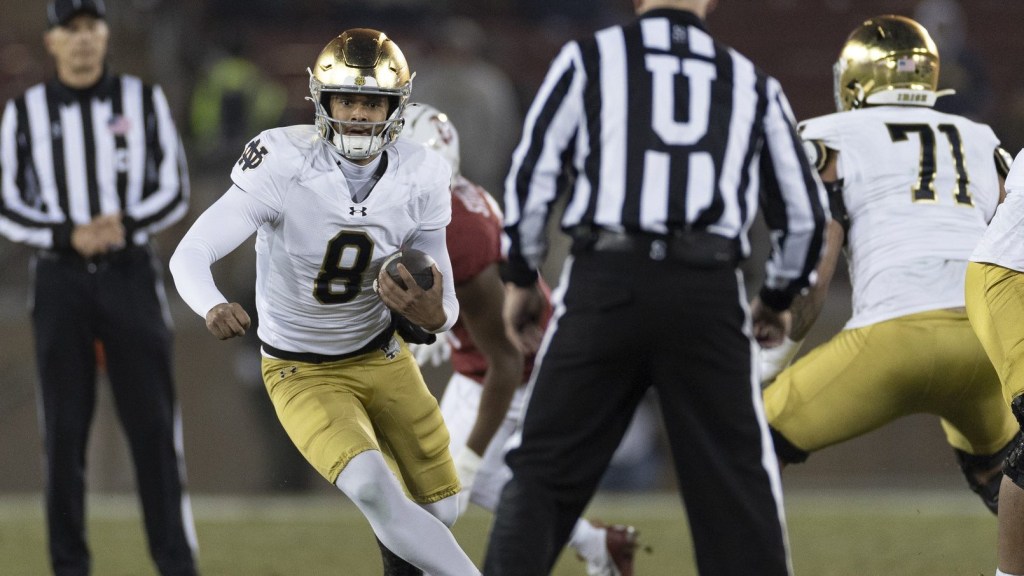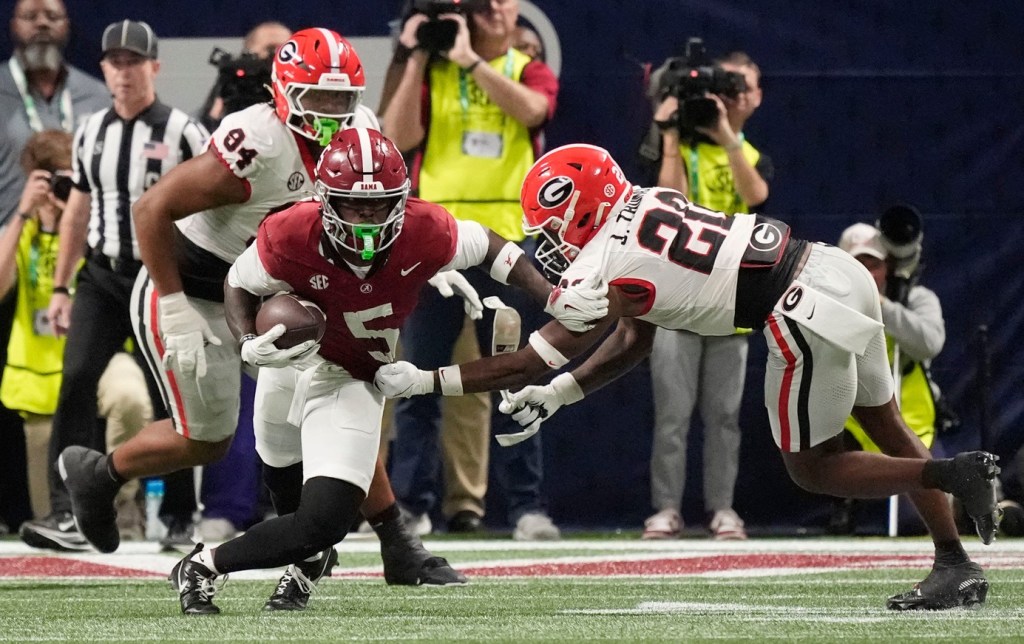ATLANTA — The Notre Dame and Ohio State football teams gathered Saturday morning at a convention center in Atlanta for an annual media day event ahead of the College Football Playoff national championship.
Several miles away, in a ballroom at the Grand Hyatt Buckhead, there was a different sort of event: About 50 current and former players came together for a two-day summit—called the “College Football Players-Only Meeting”—to discuss college athlete organizing efforts. It was the latest in a growing number of organizing efforts across the college sports landscape, and is believed to be the first of its kind to take place at the College Football Playoff. The event was hosted by an advocacy group called Athletes.org, founded by former INFLCR CEO Jim Cavale, which hopes to one day become the main college athlete players association.
“I would start by saying, we’re here to make history,” Northwestern quarterback Mike Wright said. “It’s really just about our voices being heard, whether you’re here to talk about the NIL, the transfer portal, it’s been great just hearing the different perspectives.”
The event suggests that there’s momentum for a players association, despite recent failures of previous organizing efforts. The athlete unionization movement has been around for at least a decade—since Northwestern football players first attempted a union effort in 2013. (The two Northwestern players who spoke with the media said, however, that they didn’t know much about the effort that they appeared to be building on.) Dartmouth men’s basketball players tried again in 2024—but killed their effort due to shifting political leadership at the National Labor Relations Board. The same fate befell an attempt to get USC football and basketball players classified as employees.
But AO is one of the groups plowing forward. College athletes are notoriously difficult to organize, given the fact that they cycle through college in just a few short years with many competing obligations. Players discovered AO in a variety of ways, from social media to marketing outreach.
Dozens of power conference football players, from Colorado to UNC, agreed to attend. Grant House, the former Arizona State swimmer and named plaintiff in the pivotal House v. NCAA lawsuit, sat front and center. (House had also signed a letter submitted in the House case asking for AO to represent the plaintiffs in a players association.) Former athletes participated, too, including former Penn State quarterback Sean Clifford, who had involved himself in previous college athlete organizing efforts at State College that were ultimately unsuccessful.
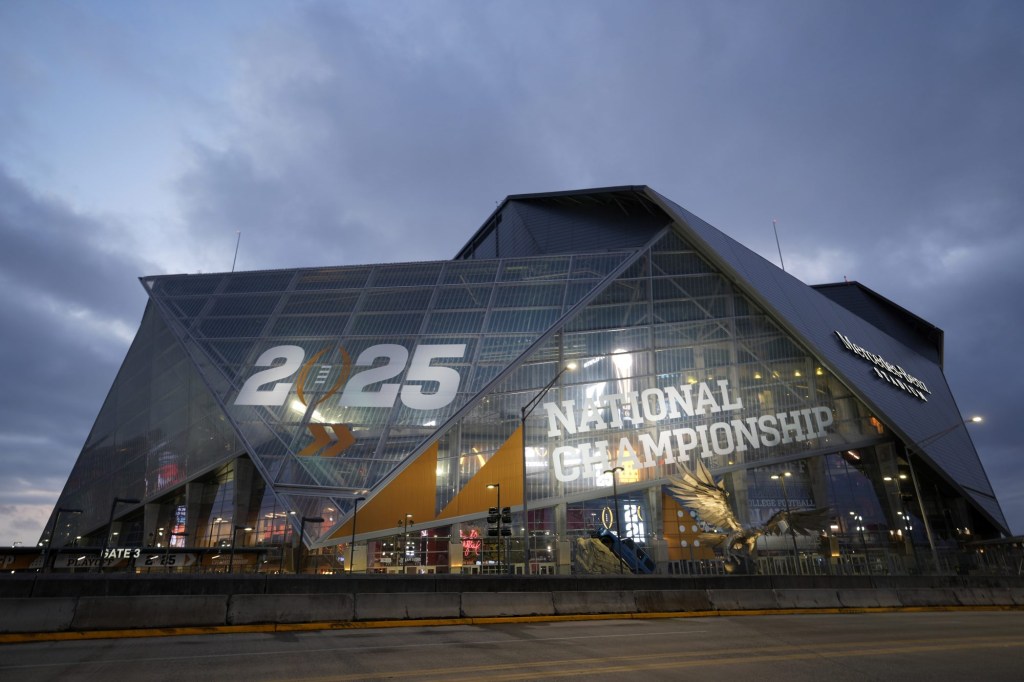
Players sat in rows of tables and chairs reminiscent of a lecture hall. But rather than strategizing unionization efforts, the event was much more rudimentary: The goal was to provide basic educational opportunities for players to learn about the labor landscape, the House settlement (that would facilitate revenue-sharing with players and schools), and other benefits they may be able to achieve. (There was a corporate side to the event, too, such as sponsors and a coordinated media coverage effort.)
The organizing effort is still in its infancy stages. Players weren’t ready to publicize a list of demands when they met with reporters to discuss the event Saturday. If anything, the summit showed that perhaps the biggest roadblock athletes face with organizing is a lack of access to education.
When asked by Front Office Sports whether they would be interested in being deemed employees, for example, only one player answered: UCLA football player KJ Wallace said that “it was too late.” The implication was that players are already treated like employees, but he declined to confirm that he believes athletes should be. Co-founder and executive director Bandon Copeland said that in response to a survey conducted at the event, 94% of players said they’d be interested in learning more about the pros and cons of employment status.
“It’s not, ‘Do the athletes want to be employees,’” AO founder Jim Cavale said. “It’s how they’re treated.”
One thing they were adamant about: that the proposed 10-day transfer portal window would be too short. Multiple players spoke about how the transfer portal had helped them get out of toxic team situations.
But the event suggests that even though some union efforts have met an abrupt end, there’s still an appetite for players to have a voice in college sports’ new era—whether through a formally recognized labor union or just a collective association. Said Boise State safety Seyi Oladipo: “We all want a union.”
